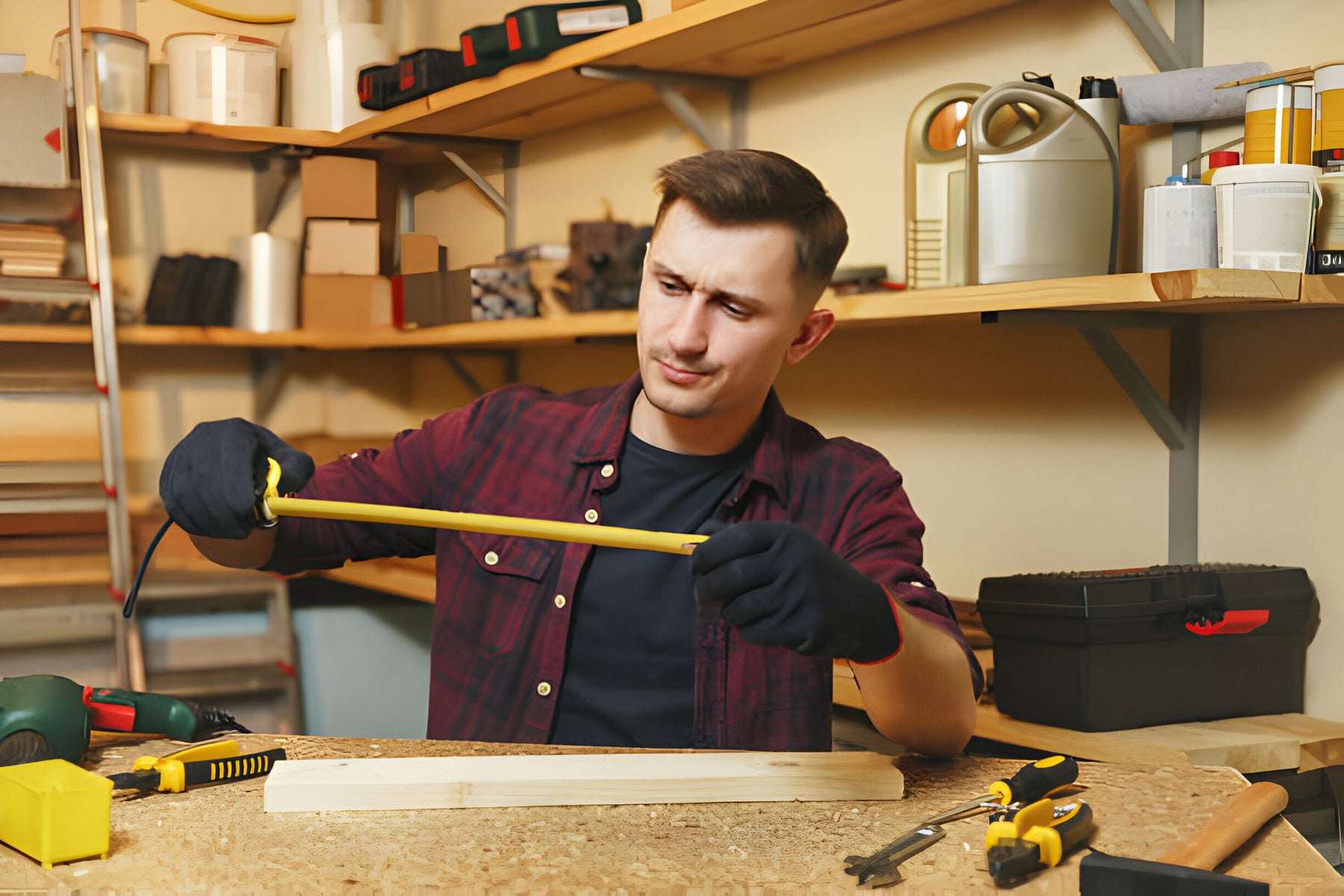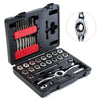
Sharpen Your Eye: Developing Accuracy in Laying Out Projects
Laying out designs accurately is crucial for craftspeople across all disciplines. Even minor mistakes create frustrations, costly reworks, or unhappy clients down the line. This comprehensive guide explores layout techniques to help practitioners of all experience levels develop precision through practice.
Whether marking architectural millwork, cabinets, furniture, or other woodwork, taking time to truly master fundamental skills deliver consistent quality. Layout represents a foundational craft requiring patience and commitment to learning tools. This extensive manual examines layout's nuances, from necessary supplies to interactive exercises and real-world applications.
Building competency empowers creators. With diligence, layout accuracy becomes second nature, allowing focus on creativity. Let's start sharpening layout skills together through focused study and applied practice of tried-and-true techniques. Continued development chisels expert intuitive abilities serving makers throughout careers.
The Evolution and Application of Measurement and Layout Tools
Measurement and layout tools have been the backbone of construction, design, and craftsmanship throughout history. Their evolution from rudimentary instruments to precision tools reflects humanity's ingenuity and the relentless pursuit of accuracy. This blog section delves into the historical significance, evolution, and modern application of these indispensable tools.
Historical Significance
The journey of measurement tools begins in ancient civilizations, where the need for building and creating necessitated the invention of measurement methods. The Egyptians used the cubit, while the Romans employed the groma for land surveying. These early tools were crucial for constructing architectural marvels, many of which still stand today. The odometer, invented by the ancient Greeks, exemplified early human efforts to measure distances accurately, laying the groundwork for modern transportation planning.
Evolution of Tools
Over centuries, the quest for precision led to the development of more sophisticated measuring instruments. The invention of the chronometer in the 18th century revolutionized navigation by allowing for precise timekeeping at sea. Similarly, the sextant enabled explorers to determine their latitude by measuring the angle between celestial objects and the horizon. In the realm of construction and woodworking, tools such as squares, calipers, and rulers became more refined, allowing for unprecedented levels of accuracy in material layout and cutting.
Modern Applications
Today, measurement and layout tools are more advanced than ever, incorporating digital technology to achieve near-perfect precision. Digital calipers, laser levels, and computer-aided design (CAD) software have transformed how professionals in various fields— from construction to manufacturing—measure, design, and execute their work. These tools not only allow for more efficient and accurate work but also save time and reduce the margin for error, ensuring that projects meet stringent quality standards.
Sharpening Skills for Accuracy
Despite the advancements in technology, the fundamental importance of skill and accuracy in using these tools remains unchanged. Whether it's marking out a piece of furniture for construction or laying out the foundation of a building, the precision of the work heavily relies on the craftsman's ability to accurately interpret measurements and apply them. For professionals and hobbyists alike, mastering the use of these tools through practice and patience is essential. It's not just about the tools themselves, but how effectively they are wielded that determines the quality of the final product.
Sourcing the Right Layout Tools
Proper tools make layout enjoyable and precise:
- Tape measure (16' fiberglass type with 1/32" increments)
- Level/plumb bob (24" aluminum or 2' tubular)
- Straightedge (4-8' aluminum/straight-grained wood)
- Chalk line/string line (waxed string or line reel)
- Marking tools (pencils, markers, scribes, dividers)
- Angle tools (protractor, combination square, trammel)
- Calipers/gauges (sliding, adjustable, depth, height)
High-quality tools optimized for woodworking facilitate precise layouts. Regularly inspecting tools ensures calibration. Replace worn items promptly to maintain accuracy. Well-cared for equipment lasts a lifetime.
Mastering Measuring Fundamentals
Key concepts:
- Measure to the line, not tape end, for exact dimensions
- Read tape fully without backtracking for transposition errors
- Round up 1/32"-1/16" from actual for clearance
- Repeat measurements as work progresses to avoid compounding mistakes
- Re-check critical dimensions before transferring layout
Rigorous attention prevents costly mistakes. Repeatedly practicing measurements enhances intuition developing life-long consistent accuracy from subtle incremental improvements.
Laying Multiple Panel Layouts
Panel construction requires precise layout translating engineered drawings:
- Establish reference guidelines for assembly alignment
- Layout individual frame/panel/trim components incrementally
- Identify joinery locations across parts before marking profiles
- Leave parts oversized initially; join/trim to final after test-fitting
- Apply consistent reveal spacings across assemblies for uniformity
- Re-check fully fitted assemblies prior to final machining/assembly
Meticulous planning streamlines panel assembly. Practicing such techniques cultivates multi-part layout proficiency invaluable across industries. Commitment pays dividends.
Mastering Angular Layout Techniques
Precisely wiring angles involves:
- Using protractor/trammel points for consistent long compound miters
- Laying out angles sequentially between guidelines for dimensional control
- Frequently verifying accuracy as angled layout lines progress
- Practicing complex multi-angle layouts without Templates
- Re-checking completed layouts against original design specifications
Developing angular techniques transforms tricky geometry work to intuitive processes. Diligently practicing unfamiliar configurations builds fluency serving even very complex projects. Layout guides successful joinery results.
Scribing Curved Profiles
Curves including radii, arcs and complex blends require focused practice:
- Making accurate templates to scribe identical reproduced profiles
- Securing templates precisely at scribe points or layout lines
- Taking time describing full curves in smooth, consistent strokes
- Checking scribed layouts closely against templates for consistencies
- Repeating scribed profiles multiple times to build consistent technique
Meticulous curve layout aids complex artistic detail work. Refinement through repetition cultivates proficiency serving fine furniture and millwork design aesthetics. Developed skills simplify convoluted layout tasks.
Advancing Layout Expertise
Expanding capabilities involves regularly seeking fresh techniques:
- Attending local trade seminars open to sharing expertise
- Networking craft guilds pairing with mentors for advisement
- Trying unfamiliar process varieties like CNC/laser cutting layouts
- Practicing proportional techniques like triangulation division
- Consulting trade publications/online references for specialty methods
Lifelong learning pushes creative boundaries. Seeking guidance supplements solo practice maintaining curiosity preserving craft motivation. Commitment drives continual refinement.
Layout Serves All Scales of Woodwork
Regardless project scale, layout fundamentals transfer between disciplines:
- Furniture construction utilizes proportional layouts and complex joinery
- Architectural millwork applies angular techniques across large assemblies
- Model making proficiently scribes intricate reproduced details
- Boatbuilding maintains dimensional precision under extreme conditions
- Instrument fabrication demands micro-measurement accuracy
Consistency across scales develops thorough comprehensive practice abilities utilized whatever work's nature. Layout mastery serves makers uniformly.
Related Article: The Ultimate Guide to Layout and Measurement Tools
Practice Makes Permanent
In conclusion, layout represents a continually perfectible craft requiring life-long commitment to self-improvement. Starting projects only when properly prepared through meticulous planning pays dividends in stress-free builds. Interactive practicing transfers fundamentals consistently across scales and applications.
Routine exercises preserve abilities sharpened. Layout done right simplifies even very complex creations into reality through self-assured translation of vision. Devotion to continuously refining this baseline skill serves craftspeople at any experience level far into the future. Staying dedicated inspires abilities nurtured permanently.



